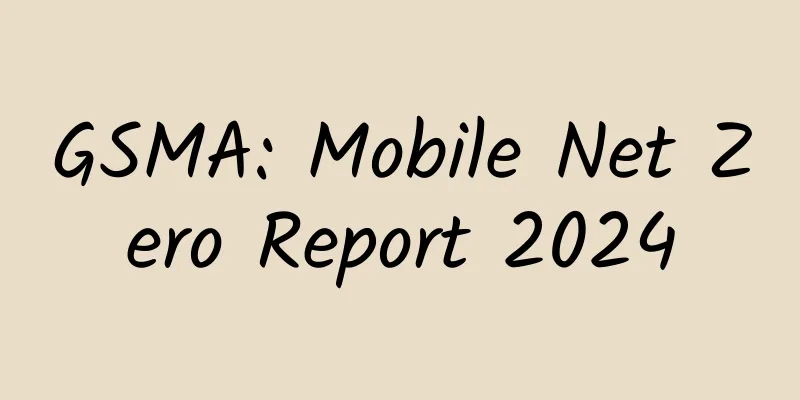GSMA: Mobile Net Zero Report 2024

|
GSMA releases 'Mobile Net Zero Report 2024'. Climate action remains a key priority for the mobile industry. In 2019, the mobile industry set a target of achieving net zero emissions by 2050, becoming one of the first industries in the world to set such an ambitious goal. In 2023, additional mobile network operators joined the GSMA Climate Action Task Force. Mobile operators are leaders in proactively committing to voluntary climate targets. In the past year, eight operators submitted new near-term targets to the Science Based Targets initiative, bringing the total to 70 operators, representing nearly half of global mobile connections. 53 operators have also committed to net zero emissions targets. The 70 mobile network operators that disclosed to CDP in 2023 accounted for more than half of the world's mobile connections, compared to 67 in 2022. In addition, data collected from the sustainability reports of nine large operators showed that the total disclosure coverage reached 80%. The quality of disclosures has also improved: a record 19 operators received an A rating in 2023. More than a quarter of operators disclosing to CDP received an A rating; in 2023, this proportion was just 1.5%. Three quarters of the mobile industry’s carbon emissions come from its value chain, highlighting the importance of engaging the supply chain and customers. Operational emissions fell in most regions between 2019 and 2022, with Europe posting a 50% drop. In North America, Latin America and the Middle East and North Africa, operators reduced emissions by 20-30%. Despite a surge in demand for data and connectivity, operational emissions have fallen thanks to advances in energy efficiency and renewable energy. Global internet traffic more than doubled between 2019 and 2022, with mobile connections growing 7%. Information provided by operators shows that the energy intensity of data transmission will decrease by an average of 10%-20% per year between 2019 and 2022. Renewable energy has already played a major role in reducing mobile operators’ emissions, accounting for one-third of the reductions expected between 2021 and 2022. Operators disclosing to CDP purchased 50 TWh of renewable electricity in 2022, accounting for one-third of their purchased electricity, up from 14% in 2019. Without this renewable energy, operational carbon emissions in 2022 would have been an estimated 15 million tonnes higher. |
<<: Can micro-consoles make a comeback? A review of the “Rayman” game on three platforms
>>: Beijing's 50M broadband has shrunk five times
Recommend
How to get users to try new products when promoting them? Start by awakening your primal brain!
Many new products are doing very well, but people...
688 metacercariae were found on a water chestnut. How can we eat water chestnuts, water caltrops and wild rice stems safely?
Summer is the season when aquatic vegetables such...
How to position your personality in short videos?
We have seen that many popular short video accoun...
Why not knowing how to operate a product is not a good business!
Preface-We are all moving forward on the road of ...
Case analysis: How to optimize information flow advertising during the off-season?
In recent years, with the implementation of housi...
Short video planning and operation guide!
During last year's National Day, Zhang Ce and...
The Matrix "brain tube" technology demonstration: you can control the mouse with your mind
Two studies from Stanford University and the Univ...
Tips for placing Tencent ads in the automotive industry
1. Industry prospects and current situation With ...
The dark blue S05 is unveiled, with a youthful and dynamic design and a 2880mm wheelbase with plenty of space.
Recently, DeepBlue S05, a new model under DeepBlu...
Code practice of background positioning upload
[[142068]] Preface As mentioned in the previous a...
Zhihu’s operational strategy
I recently updated the Zhihu app to 6.46.0., and ...
How to join Baidu AiPurchasing? How to join Baidu Aicaigou promotion?
How to join Baidu AiPurchasing? How to join Baidu...
Google will face the highest fine in history: Android system monopoly may be broken
Google faces a record fine from the European Unio...
3 charts to master the methods of marketing promotion and implementation planning
In marketing promotion , we can use various model...
Digging some wild vegetables, and poof, I got COVID-19?!
There have been cases of suspected aerosol transm...









